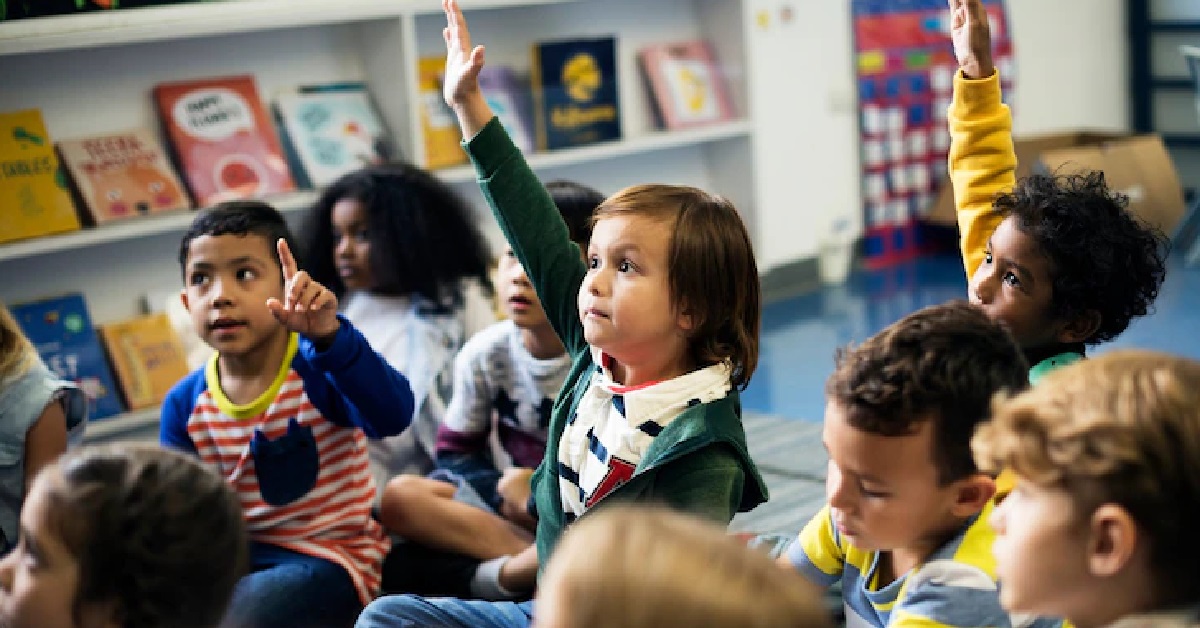Montessori vs Traditional Education – Which is Better?

It is always hard for parents to decide between Montessori school vs traditional education. Sometimes you may not feel really confident in concluding which one is right for the children.
The Montessori and traditional schools have different approaches to education. You can conclude “the better” only when you know each approach in student learning methods and developments.
We help you in breaking down these two topics for you by highlighting what kind of education you choose to provide to your children.
What is Montessori Education?
The Montessori school follows the principles of Maria Montessori’s research. She was an Italian educator who believed that children should not be forced to learn, but should engage in a playful, natural process. The principles are freedom, independence, and responsibility.
It promotes students to be independent and open to learning new things while assisting them in becoming more responsive to learning new things. Instead of memorization or abstract thought, the Montessori method of education encourages active learning. The method of Montessori education focuses on the child rather than academics.
Here are four comparisons to illustrate how Montessori and traditional education approaches are different.
Difference between Montessori vs Traditional Schools:
In this competitive world, the future of children is still becoming revolutionary, and where parents look for certain metrics concerning the future of their children. It’s why these are four different approaches you need to know.
1. Curiosity vs Passive Learning
The teaching philosophy of the Montessori method is different where there is a lot of learning through play. In comparison with traditional classrooms, it’s quite less focused on playtime and concentrating on instructions and completing the worksheets.
Academic abilities and development stages are taken into account when designing lessons and activities. Prioritizing the child’s time and freedom to master every area of academic learning. It’s more flexible in Montessori.
Whereas, the traditional approach focuses on pre-defined academic designs and teacher-guided lessons in their scheduled time. Children may possibly get into the process of memorization as the approach assumes every child is the same and have to follow the same syllabus.
2. Child-Centred vs Academic Focus
Traditional education expects all children to reach the same marks at the same time and it leads to memorization and a lack of understanding of the concepts. So, it’s a completely partial goal achieved as not all the students are good at understanding the concepts in one go, they need practical experiments and samples. It directly leads to the favouritism of the subjects and the mindset of not knowing further.
Montessori curriculum comes with learning areas expecting students to participate & develop practical life skills.
- – Learning how to do cleaning, washing tables, and food preparation. It helps to develop independence, courtesy, and concentration.
- – Easy to understand and learn new about history, art, music, science, and geography with real-life experiments.
- – Sensorial learning is essential for the physical growth of the child’s brain.
- – Educate them to learn languages concentrating on their speech, vocabulary, reading, and writing skills.
- – Involves letter identification, tracing correctly, phonics, and pincer grip.
The Montessori method of education is integrative and creative.
3. Classroom environment & size:
More students could be accommodated in a Montessori classroom, which facilitated social interaction and the growth of language abilities. The classrooms are arranged such that discovery and creativity are made easy. On shelves, activities are nicely organized and clutter-free. The classroom has basic stationery items and crafts that are accessible for the students whenever they wish to do it.
Whereas traditional school classrooms consist of desks, and chairs arranged in rows or groups based on the student’s strength and the size of the classroom. However, classroom sizes are different from one school to another.
4. Discipline
In their instructional practices, Montessori classrooms encourage natural self-discipline. There are no penalties, and disciplined students can receive rewards. It encourages students to be more diligent and focused on their activities.
Discipline in traditional education involves measures like timeouts, expulsion from the classroom, and visits to the principal’s office. Compared to Montessori, it takes a very different approach.
Still got stuck between Traditional & Montessori?
Even though there are lots of differences, the ball is in the hands of the parents to decide which type of schooling is “better” for their child. It’s up to the personal opinions of the individuals and how they value them.
Benefits of Montessori Education:
For the parents who think of letting their child join Montessori schools. Then, you can find the Vishawankar Public School known for being the best school in Coimbatore for a Montessori education approach.
- – It encourages students to learn new
- – Builds self-confidence
- – Promotes independence, and accountability
- – Having greater opportunities to build moral strength.
- – Promotes problem-solving.
Cons of Montessori Education:
If the parent’s choice is the traditional approach because of the formal progression of learning, Focusing on predetermined sequences and teacher-paced instructions. It’s okay to search for the best schools nearby. Below are the reasons of choosing tradition over Montessori,
- – Expensive to enroll
- – Limited options for teens
- – Prefer more structured environments
No matter what decision you end up making, educating yourself will enable you to support your child as they develop and learn over time.

